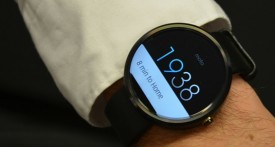The power of the Internet of Things (IoT) can be best harnessed through the computer in your pocket: your smartphone.
The Internet of Things (IoT) is shorthand for describing the trend where an increasing number of devices – from light bulbs and vacuum cleaners to refrigerators, lawnmowers, washing machines and cars – are able to connect and communicate over the internet. An IoT device is able to send and receive data to specially configured servers on the internet.
This trend towards smarter devices has occurred for a couple of reasons. The key one is that electronics are becoming so cheap that even simple devices can be managed by electronic components that have substantial processing capacity. Once electronics became integral to how most devices work, it wasn’t too far a leap to have those electronics be able to connect to the internet.
Enhanced performance through IoT
IoT allows increased functionality such as extended control panels. For example, instead of putting a simple display in a washing machine that might provide you with basic information about how your wash is going, IoT might allow you to access more complex information such as how much water and electricity is being used for each wash, and how much water and electricity has been used by the washing machine over the past six months. Because of the inherent connectivity of IoT devices, rather than displaying this on an expensive screen built into the washing machine, this information could instead be displayed on an app that connects over a network to the IoT washing machine.
IoT also allows device firmware updates. A firmware update can allows the IoT device to have functionality improvements. For example, a firmware update might mean that the engine of your lawnmower is better tuned or that your washing machine’s cycle becomes even more optimised, using less water and less electricity. IoT allows devices to be upgradable in a way that traditionally ‘dumb’ machines could not be.
The power of your pocket computer
The key for IoT to be meaningful and practical for the average person is the smartphone. Today’s smartphones are advanced touchscreen pocket computers. While you could use a laptop to connect to your washing machine or lawnmower, why would you when you already have a computer in your pocket in the form of a smartphone? Smartphones allow you to buy your IoT washing machine, download a washing machine app from your smartphone’s app store and interact with your washing machine in a way that would not be possible just using the washing machine’s control panel.
Smartphones are also uniquely suited to IoT because it is going to be everywhere. While only some of us carry around a laptop all day, almost everyone carries a smartphone at all times. The smartphone is becoming our ubiquitous computing interface. We already use it for a large number of daily tasks, so using it to interact with our smart devices will, to most people, feel like a natural progression. Remember that IoT isn’t just going to be something we interact with in the home. IoT devices are going to be at school, in the office, in the garden shed and in our garages. We’re more likely to interact with IoT using a smartphone simply because that’s the computing platform we’re most likely to have with us at any point in time.
An IoT-enabled device can warn us if a component is going to fail and may even prompt us, through our smartphone app, to book a service call. An IoT-enabled device can monitor the temperature and air flow inside a tumble dryer and send a message through the app on the smartphone to remind us to empty out the lint filter. Should we be concerned that something isn’t quite right with our IoT-enabled device, we’ll be able to run a diagnostic from our smartphone. This is much cheaper than calling out someone to look at the device and to perform the check for us.
Each device we use will be able to collect data and we’ll be able to extract that data using an app running on a smartphone. Some will wonder what the point of all that data is, while others will be able to analyse that data to determine things they didn’t already know. For example, it might be that using one setting on a washing machine uses substantially more water than another, and that it’s only when you are able to look at a graph on your phone showing the water usage that you’re able to appreciate the difference.
Some people ask whether or not it makes immediate sense for a light bulb, vacuum cleaner or refrigerator to be internet connected. IoT doesn’t mean that ‘dumb’ devices are going away, just that consumers will have more options when it comes to smart devices. The way you will interact with those devices, most of the time, will be through your touch-enabled smartphone.














